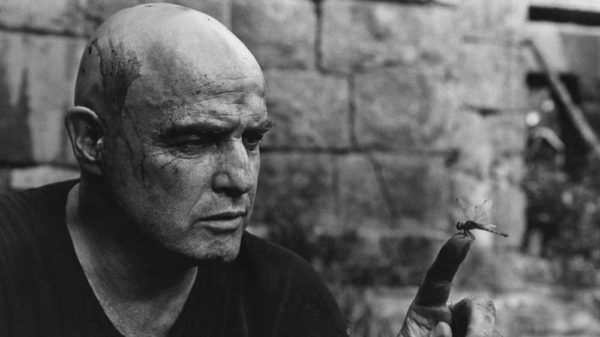A technique initially developed by Russian theatre practitioner Konstantin Stanislavski, method acting was brought to New York in the 1930s by director Lee Strasberg.
Together with Harold Clurman, Stanford Meisner, Stella Adler and Robert Lewis, Strasberg adapted the technique to focus on an “inside-out” approach, using emotions and experiences from the actor’s life to bring authenticity to performances. He considered that the audience would only buy into the performance if the actor truly believed what he was doing on stage was real. Strasberg developed exercises which encouraged actors to behave truthfully under imaginary circumstances by using genuine recollections, a practice later known as sense memory.
The process of creating an emotionally truthful performance is to know the method acting system, build a back story, connect with it and then apply it to the performance. This system was perfectly demonstrated by the performances of early method actors such as Marlon Brando, who came to define the golden age of cinema. Though he never quite went to the extremes of those who came after him, his career provided a strong template for actors following in his footsteps. His approach revolutionised American acting, showing the world that it was possible to act without looking like acting. Enthralled by the sense of reality, audiences felt as though were being allowed to peek into other people’s lives. Actors including Paul Newman, Montgomery Clift and Jack Nicholson took the acting style through to the mid-20th Century, popularising it in mainstream Hollywood as a way of earning respect for a career which did not require “hard labour”.
The technique was subsequently developed into many different methodologies and most trained method actors use a combination of them all in their approach to acting. Meryl Streep relied heavily on the affective memory technique when playing the role of Margaret Thatcher in The Iron Lady (2011), drawing parallels between herself and the former Prime Minister as “outsiders”, while Sean Penn trained under Peggy Feury in his Oscar-winning role in Milk (2008). Christian Bale lost more than 60 pounds for his role in The Machinist (2004), while Tom Cruise learned how to blend into a crowd for Collateral (2004) by dressing as a FedEx driver and delivering packages.
Robert De Niro has built a hugely respected reputation for himself, carrying out intensive research into his roles to the point of obsession. De Niro regularly went up against professional boxer Jake Lamotta in his training for Raging Bull (1981), while in Casino (1995) he spent a large amount of time in gambling establishments brushing up on the rules of blackjack and insisting on using real rolls of money to tip staff.
Also earning a reputation as a dedicated method actor is Leonardo DiCaprio, who most recently slept in an animal carcass and swam in frozen rivers for his award-winning role in The Revenant (2015) and prepared for his role in The Wolf of Wall Street (2013) by spending a few months with the real Jordan Belfort.
Method acting does not always lead to success, however, as Jared Leto has recently discovered. To get into his role as the Joker in Suicide Squad (2016), Leto never came out of character, sending fellow cast members a dead pig, live rats, and switchblades. His behaviour met with bad reviews and did nothing to boost the ratings of the film on its release. Shia LaBoeuf also met with mixed reactions when he reportedly pulled his own tooth out in Fury (2014) while also neglecting to shower for weeks on end so he could understand the feeling of living in the trenches.
When done correctly, method acting is a sure-fire way to get yourself recognised as an actor, however as Leto and LaBoeuf have proved, it is a very fine line between method and madness.

